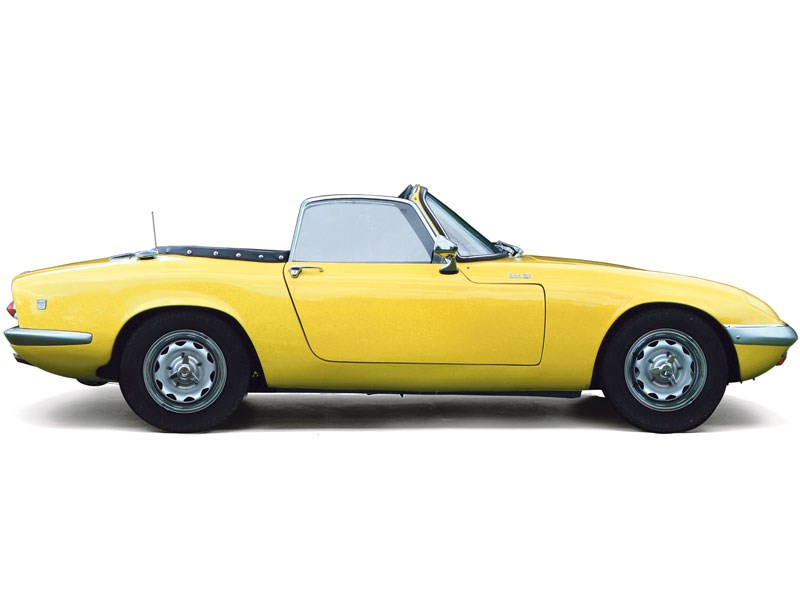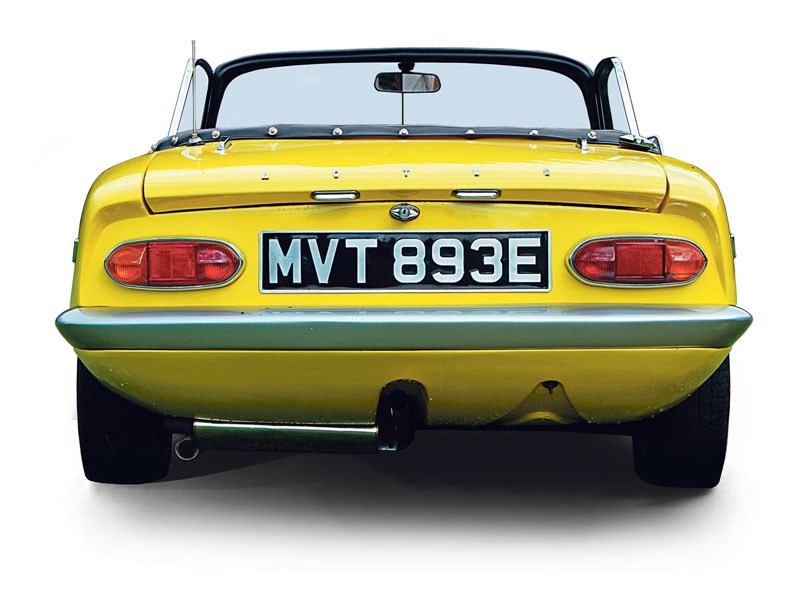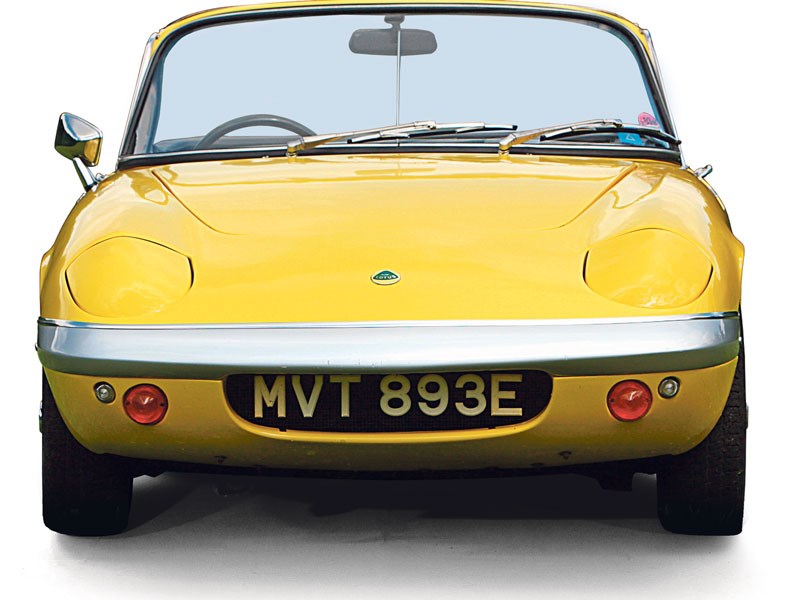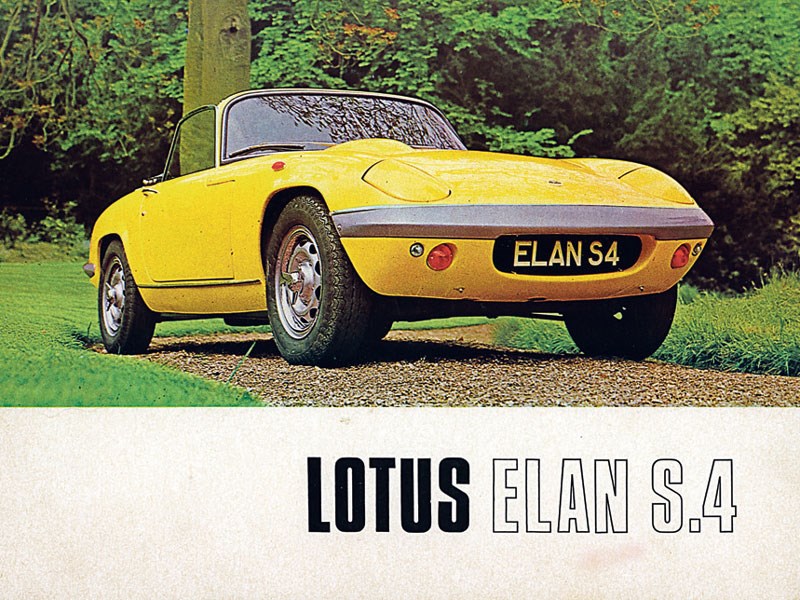The original ’60s Elan still has the power to thrill
There really isn’t very much room in an Elan, as designer Colin Chapman took something of a minimalist approach. Squeeze yourself behind the wheel, and you might find that you’re not very comfortable – especially if you’re tall. Be honest about how important comfort is to you: if the discomfort is enough to hinder your ability to drive, think again about the car you’re buying!
Once under way, though, you’ll enjoy the sheer poke of that twin-cam engine in such a light structure. The exhaust seems to make all the right noises, too, and the car seems to come alive as you build up speed. The ride is surprisingly comfortable, though definitely sporting. What you’ll enjoy most is the car’s ability to go round corners at speeds you would not have thought possible.
VITAL STATISTICS
Series 3 SE models
Engine 1558cc/4-cyl/DOHC
Power (bhp@rpm) 115bhp@6250rpm
Torque (lb ft@rpm) 112lb ft@4600rpm
Top speed 120mph
0-60mph 6.8sec
Consumption 28mpg
WHAT TO LOOK FOR
BODYWORK & CHASSIS
The one really critical element of an Elan is its backbone chassis. You really need to get right underneath the car to take a proper look; put it on a hoist, as it’s too low to crawl under. Check for any sign of twisting, and avoid any chassis which has been plated or welded. Look for rot in the turret-like extensions at each corner of the Y-shaped front and rear sections which carry the suspension. Many cars have been rebuilt on a new galvanised chassis, and some on the specially-developed Spyder upgraded chassis.
The body is GRP, so you needn’t look for rust. Look instead for evidence of bodged accident repairs. Repair sections can be grafted in seamlessly by an expert, but many DIY repairs have been less than expert. A little cracking of the gel coat is only to be expected, although major stress cracks suggest trouble of one sort or another. Check that the headlamps pop up as they should; early cars used a vacuum system to lift them, while later cars had a ‘fail-safe’ arrangement where the vacuum system kept them closed.
ENGINE
Engines are notorious for oil leaks, so don’t be dismayed to spot some seeping from the cam cover. Generally, though, the engine’s reputation for being temperamental is unjustified: most problems are the result of inexpert maintenance, and we can’t stress enough how important it is to let an expert set the Lotus engine up. The twin carburettors (Strombergs, Webers or Dellortos) need careful balancing. It’s worth noting is that they are rubber-mounted and are intended to move a little. If they don’t move, somebody has tightened the mountings too much – so what else has that somebody messed up?
The twin overhead camshafts are driven by a single timing chain, and this is often maladjusted. A clatter from the front of the engine spells chain trouble. Check the screw adjuster on the left-hand side of the timing case (as you look from the front). If it is already screwed in as far as it will go, the engine needs a new chain. As for oil pressure, look for around 40psi when the engine’s warm, but don’t be alarmed if it drops as low as 20psi at idle.
RUNNING GEAR
Experts generally agree that the water pump is a weakness. It is barely up to the job, and many owners have fitted bigger radiators and alternative pumps to keep the cars cool in traffic. Over-tightening the fan belt contributes to premature water pump wear. Check for wear in the pump by gently trying to rock the fan blades fore and aft – and watch the temperature gauge during your test drive. Remember that a specialist will need a couple of days to replace the water pump if it’s gone.
BRAKES
Feel for movement in all the suspension and steering arms, as worn bushes play havoc with the handling. A weakness is worn trunnions, in the front suspension between the outer ends of the two-piece lower wishbone. The driveshafts have Rotoflex ‘doughnut’ couplings and you should see these as consumables. When were they last changed? Some owners have switched to non-original solid shafts; talk to your favoured specialist for views on this conversion. Then check the security of the steering rack, and satisfy yourself that the steering works as it should; racks need specialist adjustment.
OUR VERDICT
For sheer everyday driving fun, it’s hard to beat the original Elan. This is a car that just begs to be driven, and all the more so if it’s an open model and the sun’s out! Parts and maintenance back-up is widely available, and that’s a huge bonus. There isn’t much that can go wrong with an Elan that you can’t get fixed – although don’t expect bargain-basement prices. The car may have been officially a ‘kit car’ when it was new, but that was a way of avoiding taxes rather than an indication of any low-budget ethos! Our choice would be a late Series 3 SE or a Series 4, with the best performance and extra refinement.
However, an Elan is not for you if you’re not prepared to put in regular maintenance – and we do mean regular. Oil needs to be changed and the timing chain checked every 3000 miles or so, for example, which could be a chore to anyone used to today’s servicing intervals.
The Lotus Elan set new standards in early-1963 with its combination of light weight, performance and unsurpassed cornering ability – it literally does seem to go around corners as if it is running on rails. And what was exceptional back in its day is still very good today; the Elan remains a car by which many others are still measured in handling terms. The combination of light weight and innovative engineering resulted in a car that is just as nimble to drive as ever. It was on the shoulders of the Elan that Lotus established so much of its sporting reputation. And justifiably so.
The Ford Cortina-derived twin-cam engine is a lively motor that encourages you to extract the best from the car, although it can also be temperamental as well. You probably don’t want one if you don’t relish getting your hands dirty quite frequently. But, then again, you probably wouldn’t want any classic if you don’t like tinkering. The Elan just demands a little more of it sometimes, although at least you won’t have rusty bodywork to worry about, which is a bonus.




